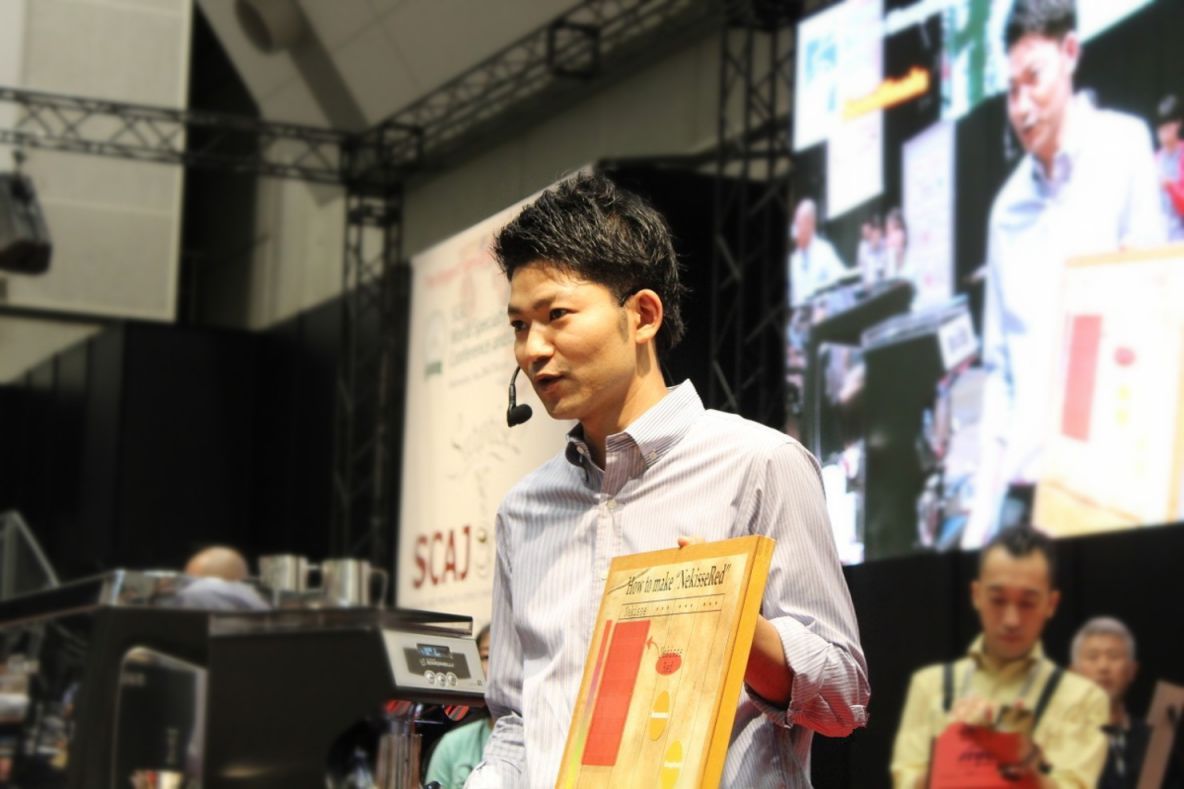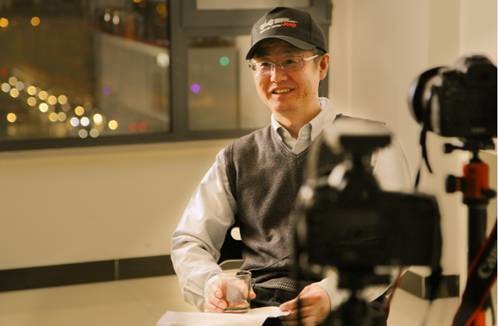Share the entrepreneurial story of the Japanese barista champion
Follow the caf é (Wechat official account vdailycom) and found that Beautiful Cafe opened a small shop of its own.
For the Rec Coffee coffee shop in Fukuoka, Japan, which officially opened in March this year, the two owners took part in the 2014 Japanese barista competition, in which Ishizawa won the Japanese barista competition. The achievements of the two young baristas benefit from Japan's developed coffee industry, but their love of coffee is also a key factor in winning the championship, and their exposure to coffee dates back to their schooldays.
Ishizawa had a strong interest in coffee from a very young age and began to learn coffee knowledge from high school, but it was not until 2005 that he really came into contact with boutique coffee. At first, I worked in a shop specializing in Italian espresso. Since then, his coffee career has changed dramatically. He was deeply attracted by the mellow taste, bright sour taste and complex taste of coffee.

When Ishizawa began to study coffee, he would try to bake coffee in the frying pan at home. At that time, he used roasted beans to make a cup of espresso in the store. Since then, many friends will come to buy coffee beans from Rec Coffee. This is the prototype of Rec Coffee boutique coffee. The ultimate trend of this most persistent love for coffee is that these two young people get into coffee and really start their coffee careers, both addicted to boutique coffee.
The two young men have a different way of starting a business. They bought a CMB, turned it into a Rec Coffee mobile coffee shop and drove it around Japan. The two men invested all the money they had saved in this coffee bus. With it, the two will be able to provide customers with boutique coffee from morning till night, anytime and anywhere. At that time, the two thought that it would be better to take the initiative to promote boutique coffee rather than let customers come to their own door.
Coffee's success enabled them to have more funds, which eventually led to the establishment of Rec Coffee Cafe. Today, they have two branches across Japan. Some people think that boutique coffee is still a new concept in Japan, but Ishizawa and Bei Tian believe that the constant pursuit of boutique coffee is just another inheritance of Japan's long history and culture. Back then, the Japanese tea ceremony was very popular. The owner of the teahouse will carefully prepare tea for customers, and customers also have enough space and time to relax and savor. In the 21st century, the Japanese tea ceremony culture has undergone earth-shaking changes. Extract the essence of this culture and present it to customers with the most perfect coffee experience. As the market matures, more people want higher quality coffee with more unique taste.
The two young elites in the coffee industry have never changed their goal for the future of Rec Coffee Cafe, which is to make the best coffee available to as many people as possible, even one cup per customer. There is zero distance and face-to-face contact between baristas and customers. Whenever I stand in the bar to make coffee for guests and see the satisfied smile of customers, I will feel extremely happy and satisfied, which should be the most beautiful enjoyment and wish of every coffee practitioner.
[related reading]
Cultivation conditions of Coffee
There is a noun called "Coffee Belt". There are more than 60 coffee producing countries in the world, most of which are located in the tropics and subtropics between the Tropic of Cancer (23 °26 'north and south). This coffee growing area is called a "coffee belt" or "coffee area" (Coffee Zone).
The annual average temperature of the coffee belt is above 20 ℃, because the coffee tree is a tropical plant and cannot grow normally if the temperature is below 20 ℃.
1. Climatic conditions
Arabica coffee is not resistant to high temperature and humid climate, nor can it stay at a low temperature below 5 ℃ for a long time, so it is planted on steep slopes of 1000 to 2000 meters above sea level. On the other hand, Robusta caffeine is adaptable (Robusta originally means "tenacious and strong") and is mostly grown in lowlands below 1000 meters above sea level.
The average annual rainfall of 1000 mm to 2000 mm, coupled with moderate sunshine, is the most suitable environment for coffee growth. However, Arabica coffee is not resistant to strong sunlight and extreme heat, so it is suitable for growing in terrain prone to morning fog, especially where there is a large temperature difference between day and night. In addition, some places will plant shelter trees in order to avoid direct sunlight, such as bananas, maize, mango trees and so on.
two。 Soil quality
To put it simply, the soil suitable for growing coffee is fertile volcanic soil with enough moisture and moisture, and rich in organic matter. The Ethiopian plateau is covered with this kind of volcanic weathered soil, so the soil rich in humus is naturally one of the basic conditions for growing coffee.
In fact, the main coffee-producing areas in the highlands of Brazil (called "Terra rossa", meaning fertile red soil weathered by basalt), the highlands of Central America, around the Andes of South America, the African highlands, the West Indies, Java (some of the soils are also weathered by volcanic rocks, or a mixture of volcanic ash and humus), and the Ethiopian highlands, have fertile soils with plenty of water.
Soil has a subtle effect on the taste of coffee. For example, the acidity of coffee grown on slightly acidic soil will also be strong; for example, the soil around Rio de Janeiro in Brazil has an iodine flavor, and the coffee will also be contaminated with that unique flavor by shaking the fruit to the ground when picking coffee beans.
3. Topography and height
It is generally believed that the coffee produced in the highlands is of better quality. Coffee-producing countries in Central America will use "elevation" as the grading standard because there are mountains crossing from the center of the continent. For example, SHB (Strictly Hard Bean) in Guatemala, the highest of the seven grades, is called SHB, which represents that its producing area is about 1370 meters above sea level.
Although the coffee farm is located on steep slopes and is not convenient for transportation, transportation, cultivation and management, this terrain has low temperatures and is prone to morning fog, which can ease the strong sunshine peculiar to the tropics and allow time for the coffee fruit to fully mature.
However, high-grade coffee such as "Blue Mountain" and "Hawaiian Kona" on the island of Jamaica are not harvested in the highlands. Because as long as there is the right temperature, rainfall and soil, there will be morning fog and a large temperature difference between day and night, high-quality coffee can be grown. It can be seen that even if "high real estate equals high quality", it does not mean that "low real estate equals low quality". Elevation can only be regarded as one of the reference criteria for judging the grade of coffee. Although elevation is important, the topography and climatic conditions of the producing area are more important.
European countries, the main consumer of coffee, gave high praise to highland coffee such as Kenya and Colombia a long time ago. Quantitative coffee beans can extract more coffee liquid (that is, higher concentration), which is one of the reasons why Highland Coffee is well received.
In addition, as mentioned earlier, Robusta coffee, which is native to the Congo, is grown in the lowlands below 1000 meters above sea level. Unlike Arabica, it grows fast and is resistant to diseases and insect pests, and can be grown in non-fertile soil. Therefore, the taste and aroma are far inferior to Arabica coffee.
Important Notice :
前街咖啡 FrontStreet Coffee has moved to new addredd:
FrontStreet Coffee Address: 315,Donghua East Road,GuangZhou
Tel:020 38364473
- Prev

Share the story of Huang Wei, a famous Chinese coffee roaster.
As an imported product from the West, it is not easy for coffee to give birth to a coffee master in China. Our protagonist today is Huang Wei, who learned cocoa processing technology and coffee roasting equipment and production technology during his participation in the construction of a cocoa processing plant assisted by China in Ghana in Africa. After returning to China in 2001, due to work related to Chinese coffee growers in Yunnan, and so on.
- Next

Listen to Starbucks baristas tell the story of coffee
Following Cafe (official Wechat account vdailycom) found that Beautiful Cafe opened a small shop of its own. When you bring a cup of warm coffee to your mouth, a coffee experience for you officially begins. A cup of coffee that has been refined and condensed into essence will bring you more than just the enjoyment of taste. What's more, it is a process of multi-sensory cooperative evaluation. Starbucks.
Related
- What is the meaning of lactic acid fermentation with coffee bean treatment?
- How to judge the state of foam by sound?
- How does the latte pull out the unicorn pattern? Come to get for a little trick to improve the flower pull!
- Will flower pulling affect the taste of the latte?
- Do you know the history of coffee?
- The difference between honey treatment and sun washing what is raisin honey treatment?
- What kind of milk can a novice use to make coffee foam to keep the foam longer? The correct method and skills of milking tutorial sharing
- Why do washed coffee beans taste sour? Flavor characteristics of washed Coffee
- Introduction to the skill of how to practice the size and height of water injection around the circle of hand-brewed coffee
- How do beginners practice coffee flower drawing from scratch?

